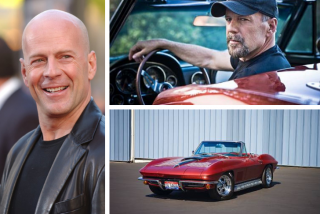Evolution Of Car Headlights
Headlights serve as the "eyes" of a car and are vital for driving safety.
As people's expectations for cars have risen, headlights have evolved to encompass not only basic lighting functions but also considerations of aesthetics, performance, and cost.
Among the modern options, LED headlights are the most widely recognized, but the history of car lighting offers an array of lesser-known innovations.
Kerosene Headlights:
In the early days of cars, simplicity prevailed, and the study of car lights took time to develop. Initially, car headlights were movable lights, essentially portable lamps used by drivers to find their way in the dark.
However, kerosene headlights had several drawbacks: they were easily extinguished by the wind, and their luminous intensity was limited, making them unsuitable for regular night driving.
To enhance their efficiency, a reflector was later added behind the kerosene headlight, leading to the birth of the first spotlight kerosene headlight, the precursor to modern headlights.
Acetylene Headlights:
Replacing kerosene headlights, acetylene headlights offered twice the brightness of electric headlights at that time and became a stable light source for early headlights.
However, these headlights had their own weaknesses. Dependent on combustion, they could be extinguished in rainy weather. Moreover, the burning of acetylene produced soda-lime, which caused skin irritation and corrosion.
Spiral Tungsten Incandescent Headlights:
The introduction of spiral tungsten filament incandescent headlights marked the electrification of automotive lighting. Although they lacked a focusing device and were unsuitable for regular night travel, they laid the foundation for further advancements.
Halogen Headlights:
Efficiently replacing incandescent headlights, halogen headlights emerged in 1960 as an upgraded version. By incorporating halogen elements, these headlights increased the brightness by 1.5 times and had a longer lifespan compared to regular incandescent headlights.
Halogen headlights being simple and inexpensive, became a common choice for car lighting. While their yellowish hue remained an enduring feature, their penetration in heavy rain or fog proved superior to higher color temperature alternatives.
However, halogen headlights had limitations in terms of brightness and longevity.
Xenon Headlights:
As a step up from halogen headlights, xenon headlights relied on gas to produce light rather than extending the lifespan of the tungsten filament. Commonly found in mid to high-end cars, xenon headlights emitted whiter, brighter light with a longer lifespan of about 10 years. However, they were less energy-efficient than LED headlights, took longer to light up, and required stabilizers and lenses for proper functionality.
LED Headlights:
Currently, LED headlights have become widely popular. LED stands for light-emitting diode, an electronic light-emitting device.
These headlights offer several advantages, including high energy efficiency, rapid response, small size, and an impressively long life span of 60,000 to 100,000 hours.
Despite these benefits, the cost of LED headlights remains a concern, and their penetration ability is not as strong as halogen headlights. Additionally, there are matrix adaptive LED headlights that can adjust the illumination for different road areas.
Laser Headlights:
The latest innovation in car lighting is laser headlights. These headlights operate by directing a laser onto phosphorus, which then releases light through a lens and reflectors.
The internal reflectors can be individually adjusted for various road conditions. Laser headlights offer greater energy efficiency and fuel efficiency, and they are smaller than LED headlights.
However, their high cost has limited their widespread adoption, and they are currently only found in a few high-end car models.
You may like:



